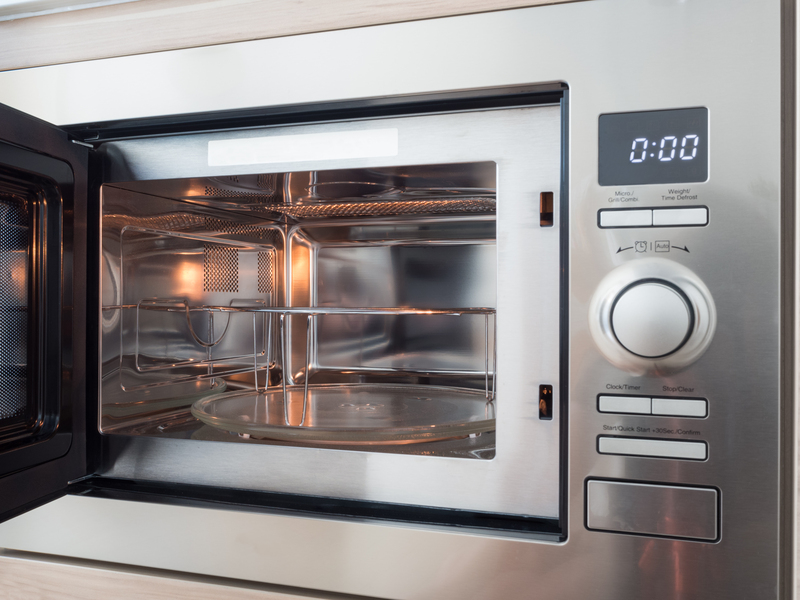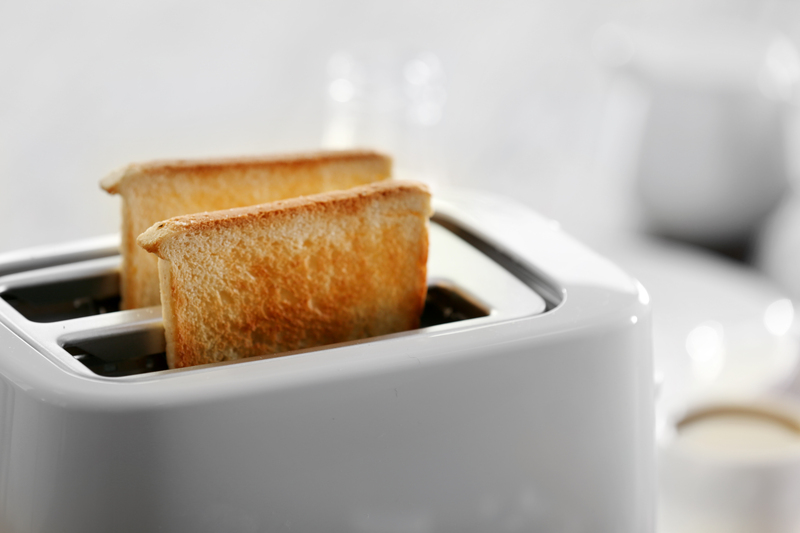Keep Your Home Fresh: Mould Cleaning for Window Sills
Posted on 20/06/2025
Keep Your Home Fresh: Mould Cleaning for Window Sills
If you've ever noticed black or green spots around your windows, you know the challenge: mould on window sills is not only unsightly, but can also be a health hazard. Regular and effective mould removal for window sills is critical for maintaining a healthy, fresh, and inviting home environment. This expert guide will cover everything you need to know about cleaning mould from window sills, the causes, prevention tips, and why keeping your window sills fresh can make a huge difference to your home's air quality and aesthetics.

Understanding the Problem: What Causes Mould on Window Sills?
Mould thrives in moist, poorly ventilated areas, making window sills a common trouble spot. Here are some of the top causes for window sill mould growth:
- Condensation: Windows naturally collect moisture, especially during colder months. Warm indoor air meets cold glass, leading to condensation which invites mould.
- Poor ventilation: Lack of fresh air flow allows humidity to accumulate, providing a perfect environment for mould spores.
- Leaky window frames: Water seepage from rain or faulty window seals can soak window sills, allowing mould to take root.
- Organic debris: Dust, dead insects, or bits of plant material caught in the corners create an organic food source for mould.
Why Clean Mould from Window Sills?
*Ignoring window sill mould can lead to much more than cosmetic issues.* Here's why prompt cleaning is a must:
- Health Risks: Mould releases spores that can cause allergies, respiratory issues, and exacerbate conditions like asthma.
- Structural Damage: Over time, mould can eat into wooden window frames or discolor painted surfaces, leading to costly repairs.
- Unpleasant Odors: Persistent mould leaves a musty, unpleasant smell that can infiltrate your home.
- Reduced Home Value: Visible mould is a red flag for prospective buyers, signaling neglected maintenance.
In short, keeping your window sills clean is key to a healthy, fresh-smelling, and beautiful home.
How to Clean Mould on Window Sills: Step-by-Step Instructions
Ready to tackle the problem head-on? Here's a comprehensive, stepwise process to clean window sill mould safely and effectively.
1. Gather Your Supplies
- Protective gloves and mask (to avoid inhaling spores)
- Safety goggles (optional, but recommended for sensitive eyes)
- Old towels or absorbent rags
- Spray bottle with white vinegar or a specialized mould cleaner
- Soft brush or non-abrasive scrubbing sponge
- Old toothbrush (for corners and crevices)
- Paper towels or clean lint-free cloths
- Bucket of warm, soapy water
2. Prepare the Area
- Open windows to increase air flow and minimize inhalation of spores and fumes.
- Lay towels under the window to protect the wall and flooring from drips.
- Put on gloves and a face mask.
3. Initial Cleaning
- Remove any loose dirt, dust, or debris from the sill with a dry cloth or vacuum.
- If you find dead insects, plant matter, or peeling paint, carefully dispose of these items.
4. Apply Mould Cleaner
- Spray a generous amount of white vinegar (or your chosen mould remover) onto the affected areas.
- Let it sit for 30-60 minutes. Vinegar is a natural, non-toxic way to kill up to 80% of mould species.
5. Scrub Gently
- Use a non-abrasive sponge or brush to gently scrub the mouldy surface. Take care not to damage paint or wood finishes.
- For stubborn or hard-to-reach areas, use an old toothbrush.
6. Rinse and Wipe Clean
- Dampen a clean cloth in warm soapy water. Wipe away any residue or remaining mould and cleaner.
- Rinse and repeat until all traces of mould are gone.
- Pat the surface dry immediately with paper towels or a dry lint-free cloth.
7. Disinfect (Optional, for Severe Cases)
- If the mould was extensive, follow up with a mixture of 1 part hydrogen peroxide (3%) to 2 parts water. Leave for 10 minutes before wiping clean.
8. Dispose of Waste Safely
- Place all used towels, sponges, and gloves in a sealed plastic bag before discarding them to prevent spore spread.
Avoiding the Common Mistakes in Mould Removal
- Never mix chemical cleaners: Combining products like bleach and vinegar can produce toxic fumes. Stick to one cleaning agent at a time.
- Avoid just wiping: Simply brushing or wiping surface mould will not kill spores. Use a proper mould killer.
- Don't ignore surrounding areas: Clean not only the sill, but also the window frame and nearby wall sections.
- Don't use porous materials: Avoid using sponges or cloths that you'll want to reuse, as they may harbour spores afterwards.
Preventing Mould Regrowth on Window Sills
Regrowing mould is a persistent problem for many households, but proactive measures will keep your window sills fresh and healthy.
Top Prevention Tips for Window Sill Mould
- Ensure Proper Ventilation: Open windows frequently to promote airflow, especially in kitchens, bathrooms, and bedrooms.
- Use Dehumidifiers: Run a dehumidifier to maintain indoor humidity below 60%--mould struggles in drier air.
- Fix Leaks Promptly: Inspect window seals and repair any gaps to prevent water intrusion during rain.
- Clean Regularly: Wipe down window sills every couple of weeks and remove any moisture, dust, or debris promptly.
- Apply Anti-Mould Products: After cleaning, consider spraying an anti-mould solution designed for indoor use to create a protective barrier.
- Use Moisture Traps: Place silica gel packets or other moisture absorbers near windows prone to condensation.
- Run Exhaust Fans: Especially important in bathrooms or kitchens, exhaust fans can reduce humidity and discourage mould formation.
Natural vs. Chemical Cleaners: Which Is Best for Cleaning Window Sills?
Vinegar and baking soda are the most popular natural remedies and are highly effective for light mould cleaning on window sills. They are eco-friendly, affordable, and safe for most surfaces.
For severe, recurring, or health-threatening infestations, chemical mould removers may be necessary. While they eliminate even the toughest spores, always follow safety guidelines when using these products, and ensure ample ventilation.
When to Call a Professional for Window Sill Mould Removal
While most minor to moderate window sill mould problems can be handled DIY, there are circumstances when expert help is recommended:
- Infestation on large areas: If the affected area is wider than 1 square meter (10 square feet), professional mould remediation is safer and more effective.
- Recurrent growth: Mould that returns after repeated cleaning may indicate hidden leaks or water damage needing specialist attention.
- Black mould (Stachybotrys): If you suspect toxic black mould, do not attempt to clean it yourself; call a qualified professional immediately.
- Health symptoms: Anyone in your household experiencing unexplained allergies or respiratory illness should avoid exposure and seek specialist assistance.

FAQ: Mould Cleaning for Window Sills
What's the best way to prevent condensation?
Maintain steady indoor temperatures and promote airflow by opening windows, using fans, and insulating your home. Closing curtains or blinds at night can also help minimize heat loss and reduce condensation on windows.
Can I paint over mould?
Never paint over mould. Paint will not kill spores and may peel or bubble as mould grows underneath. Always remove mould and wait for surfaces to dry completely before repainting.
Are there health risks if I don't clean mould from window sills?
Yes, mould can cause allergies, irritation, asthma attacks, persistent cough, or worse, especially for children, the elderly, and those with compromised immune systems.
Does sunlight help prevent window sill mould?
Absolutely. Sunlight naturally inhibits mould growth, so keep curtains open during the day to let sunshine in.
How often should I check my window sills for mould?
Inspect window sills at least monthly, or more often in humidity-prone rooms. Early action keeps the problem small and easy to manage.
Conclusion: Keeping Your Home Fresh and Healthy
Whether you live in a humid climate or simply want to maintain a cleaner, healthier environment for your family, cleaning mould from window sills is a vital household task. Staying proactive with routine inspections, prompt cleaning, and moisture control will ensure your home remains fresh, safe, and inviting.
If you follow these comprehensive mould-cleaning guidelines, you'll never have to worry about unsightly stains, unpleasant odours, or airborne spores invading your living space. Take charge of your window sills today--fresh, mould-free windows are just a cleaning session away!




